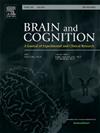Socioeconomic deprivation, brain morphology, and body fat among children and adolescents
IF 1.4
3区 心理学
Q3 NEUROSCIENCES
引用次数: 0
Abstract
Given mounting literature linking environmental adversity with neurobiological alterations, other evidence has shown association between excess adiposity and attenuated brain development, leading to our current question of how the developing brain interacts with change in body composition in response to environmental challenges. Using data from the Adolescent Brain Cognitive Development (ABCD®) Study, we conducted mediation analyses and demonstrated that socioeconomic deprivation (SED) was associated with lower total brain and cortical volumes via the mediation of higher waist-to-height ratio (WHtR), and that WHtR likewise mediated the association of SED with global brain structures. The prefrontal structures showed region- and direction-specific pathways, with bilateral superior and middle frontal gyrus being most consistently related with WHtR in addition to the impact of SED. These findings reveal a functional trade-off between brain development and fat deposition in response to environmental deprivation, and may have implications for understanding neurocognitive and somatic development among children and adolescents in different socioeconomic contexts.
儿童和青少年的社会经济剥夺、大脑形态和体脂
鉴于越来越多的文献将环境逆境与神经生物学改变联系起来,其他证据表明过度肥胖与大脑发育迟缓之间存在关联,这导致了我们当前的问题,即发育中的大脑如何与身体成分的变化相互作用,以应对环境挑战。利用青少年大脑认知发展(ABCD®)研究的数据,我们进行了中介分析,并证明社会经济剥夺(SED)通过较高的腰高比(WHtR)与较低的大脑和皮质总体积相关,并且WHtR同样介导了SED与整体大脑结构的关联。前额叶结构显示区域和方向特异性通路,除了SED的影响外,双侧额上回和中回与WHtR的关系最为一致。这些发现揭示了大脑发育和脂肪沉积之间的功能权衡,以应对环境剥夺,并可能对理解不同社会经济背景下儿童和青少年的神经认知和躯体发育具有启示意义。
本文章由计算机程序翻译,如有差异,请以英文原文为准。
求助全文
约1分钟内获得全文
求助全文
来源期刊

Brain and Cognition
医学-神经科学
CiteScore
4.60
自引率
0.00%
发文量
46
审稿时长
6 months
期刊介绍:
Brain and Cognition is a forum for the integration of the neurosciences and cognitive sciences. B&C publishes peer-reviewed research articles, theoretical papers, case histories that address important theoretical issues, and historical articles into the interaction between cognitive function and brain processes. The focus is on rigorous studies of an empirical or theoretical nature and which make an original contribution to our knowledge about the involvement of the nervous system in cognition. Coverage includes, but is not limited to memory, learning, emotion, perception, movement, music or praxis in relationship to brain structure or function. Published articles will typically address issues relating some aspect of cognitive function to its neurological substrates with clear theoretical import, formulating new hypotheses or refuting previously established hypotheses. Clinical papers are welcome if they raise issues of theoretical importance or concern and shed light on the interaction between brain function and cognitive function. We welcome review articles that clearly contribute a new perspective or integration, beyond summarizing the literature in the field; authors of review articles should make explicit where the contribution lies. We also welcome proposals for special issues on aspects of the relation between cognition and the structure and function of the nervous system. Such proposals can be made directly to the Editor-in-Chief from individuals interested in being guest editors for such collections.
 求助内容:
求助内容: 应助结果提醒方式:
应助结果提醒方式:


